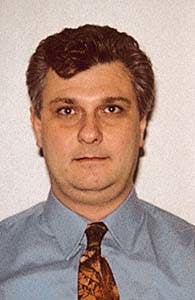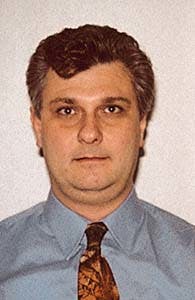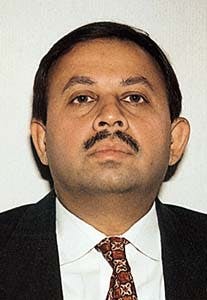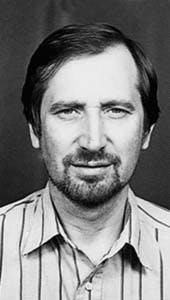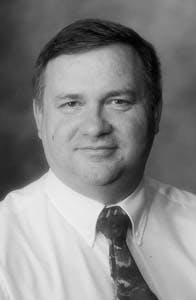Apostolos Georgiou, Ajit V. SapreA performance test of a new closed-loop, steady-state real time optimization (Clrto) system was completed at Mobil Chemical Co.'s Beaumont, Tex., ethylene plant in the olefins/aromatics complex in April 1994.
Mobil Technology Co.
Paulsboro, N.J.Peter Taylor
Mobil Chemical Co.
Yanbu, Saudi ArabiaRobert E. Galloway, Lawrence K. Casey
Mobil Chemical Co.
Beaumont, Tex.
The system is used in on-line and off-line analyses to improve process operations and profitability.
The Clrto system couples a rigorous steady-state optimization model of the entire plant with advanced-control applications for pyrolysis furnaces, compressors, and fractionation towers.
For chemical and petrochemical operations, closed loop on-line optimization accurately determines the most profitable key plant variables subject to constraints, such as feedstock availability, temperature and pressure limits, and equipment limitations. The optimization results are automatically implemented via advanced control with no human intervention.
The technology helped the Mobil plant achieve a number one rating in North America in the computer-control index of Solomon Associates' olefins-plant rankings for 1996. The plant also ranked second in the world computer-control index (1996).
Model description
Fundamental chemical engineering models were written for the entire ethylene production process. A simplified diagram of the ethylene manufacturing process is provided in Fig. 1 [103,481 bytes].The process models include a yield model to calculate effluent compositions for each furnace, rigorous compressor and refrigeration system models, and rigorous tray-to-tray distillation-column models. The process models must be accurate enough to predict the actual process interactions with the plant constraints as the optimization set points change. The sensitivity between the optimization set points and the profitability determine the level of rigor used in developing the model.
The models are written in open-equation based format. The advantages of the open-equation based modeling over traditional sequential-closed form modeling are described in literature.1-3 This format provides high flexibility in interfacing the system with advanced and regulatory controls and in calibrating the models to the actual plant conditions before the start of the optimization cycle.
Mobil's real-time optimization (RTO) system consists of over 1,850 chemical engineering models. The models contain about 216,000 variables, 193,000 equations, and 996,000 non-zero elements in the Jacobian matrix.
Because at least one of the furnaces is down at any one time, the actual size of the problem being solved for any on-line case is smaller than the total model size.
Furnace model
The Mobil olefins plant operates 12 furnaces with three different coil geometries. During normal operations, one of the furnaces is either down for repairs, down for decoking, or on hot-stream standby. Both gas and liquid feeds can be cracked.A furnace feed header model is used to calculate and map the correct feed parameters for each furnace based on the designated feed. This model also performs the mapping of gas and liquid components to form a standard furnace feed stream.
The inputs to the furnace header model include any one of eight gas feeds and five liquid feeds. Provisions were made to include other (artificial) feeds for off-line or future use. The furnace model rigorously simulates the cracking furnace system.
Every furnace model includes a radiant section (heat and yield model), a convection section, an air/fuel combustion system (a tubular exchanger after each radiant section(USX) and a transfer-line heat exchanger (TLX)), a coke model, and peripheral models.
Peripheral models include steam drums, an outlet methane/propylene calculator, a custom model for monitoring or specifying a conversion, a steam/hydrocarbon ratio model, purge steam models, and restriction orifice (venturi) models.
Recovery section model
The model accuracy of the recovery section is also important. Although the furnace model sets the overall plant yields and calculates the major energy resources of the plant, the major constraints in an ethylene plant are often in the recovery section. Small changes in the processing approach can significantly impact process constraints and profitability.Fundamental chemical engineering models are used for distillation columns (e.g., tray-to-tray and Murphree efficiency calculations), the compressors (stage-by-stage calculations with performance curves), mixers, and heat exchangers (heat-transfer coefficient equations with fouling factors). The quench and chilling train models comprise detailed heat and material balance calculations to simulate the heat recovery, product separations, and steam.
Objective function
The RTO project's objective function calculates the overall profit. The profit function is defined as:Profit = (sum of product values) - (sum of feed costs) - (sum of utility costs)
Feeds and products can be calculated with a single base value for the entire stream or with a separate value for any component or class of components. Multiple tier prices for the feeds, product, or utilities can also be used.
Model evaluation
The model's performance is monitored continuously. Periodic lab analyses of effluent yields are used to check the performance of the furnace models. In plant-wide optimization, the plant model accuracy of the product ethylene is important.Besides the furnace yield model, other factors affect the plant-model accuracy. These factors include accurate modeling of the columns, vent systems, and conditions specified for plant "steady-state."
Fig. 2 [51,726 bytes] compares the model prediction of total ethylene production with the actual plant measurement. The data are randomly scattered around the x-axis, and the absolute values of the bias are within the limits of plant measurement accuracy.
Another way to evaluate the model's performance is to analyze the material balance report, which is produced automatically after each run. An overall material balance verifies the on-line measurements. The Clrto system provides a material balance around each section of the plant (e.g., the furnace system or refinery gas cold box).
Clrto description
The closed loop optimization system consists of several components. The components include engineering models which simulate the plant, on-line interface programs for the engineers, and hardware platforms. The models are solved by using a sequential quadratic programming (SQP) technique.The model equations that SQP solves are presented in an open-equation based format. The SQP algorithm drives the residuals to within a user-specified tolerance of zero at the solution while optimizing the objective function.
The simultaneous-solution methodology is amenable with the open-form format and reduces the overall execution time significantly. In addition, the open-form format allows the use of the same model equations for solving both the parameter and optimization cases.
The optimization system runs on dedicated workstations, rather than on the process control computers.
Optimization variables
The system can send up to 48 optimization results (set points) to the lower-level advanced-control applications. The majority of the optimization targets reside on the cracking-furnace control.The severity (conversion), feed rate, steam/oil ratio, and optimal-feed rate to the furnaces determine the overall plant economics. The solution implemented is subject to feedstock availability and equipment constraints. Other optimization variables include suction pressures for both charge-gas compressors, residue-gas expander inlet pressure, residue-gas ethylene content, cold box/demethanizer delta pressure, methane in the de-ethanizer overhead, propylene in the de-ethanizer overhead, ethane losses in the de-ethanizer bottoms, and de-ethanizer preheat ratio.
The optimization variables are implemented via conventional advanced-control systems (ACS) from Setpoint Inc., Dynamic Matrix Control Corp. (DMCC), and other proprietary controllers.
Sequence of events
A steady-state detection computer program runs continually to detect the status of the plant. This program monitors key measurements such as plant feed rates, feed codes, and steam flows to determine if the plant is steady enough to run a parameter case.If the program detects that the plant is steady, hourly averages of all the plant measurements used as inputs to the optimization model are calculated. The validity-checking programs screen the input data and set up the specifications for the parameter case. Then the parameter case runs to match the model with current plant operating conditions.
Upon successful completion of the parameter case, the optimization-validity program is activated to process the on/off control optimization flags and the current bounds, which are typically processing limits and manipulated variable bounds on the ACS. Next, actual optimization calculations are executed.
The optimization case calculates the values which maximize the profit objective function. The computed optimal operating state is valid as long as the conditions present at the time of the calculation remain unchanged.
A computer program checks the status of the plant before the implementation of the optimization results. The optimization targets are ramped as controlled variable limits on the ACS, which holds the plant at these limits. The ramping period varies for different variables.
After the line-out period, the steady-state checker resumes looking at the key variables in the plant to determine if the plant is steady, and the cycle starts over. The whole procedure usually takes less than 60 min on a typical RISC-based workstation.
While the optimized variables are implemented, a check to see if all optimization set points are "on" for optimization and control. If any optimization set points are not on, a full optimization case (advisory mode) is run. A full optimization case is a second optimization case, run with the same plant data, to calculate the new overall profit ($/hr) when all the optimization variables (set points) are on optimization and control.
After completion of the full optimization case, the results are transferred to the control system for the operators to see. The full-optimization set points may then be compared to the actual implemented variables. Since the full-optimization case runs parallel to the ramping of the optimization targets, it does not affect the implementation of the optimized variables. After the completion of the line-out period and the full optimization, the optimization cycle is completed.
Fig. 3 [106,074 bytes] illustrates the real-time optimization cycle.
Tangible benefits
Based on a post-audit analysis, the economic benefits derived from Clrto are significant. Results indicate a project payback period of less than 9 months. The obvious benefits of the on-line optimization system result from pushing the process to the most profitable plant constraints based on the latest economic data. 3 4The accurate constraint prediction of the on-line model coupled with the underlying multivariable control system's ability to keep the plant at numerous simultaneous constraints allowed the system to set a new plant production record shortly after being commissioned.
Fig. 4 [42,045 bytes] shows the ethylene production increase as a function of the RTO utilization. Key-performance indicators (KPIs) which track utilization and number of solutions per day have been developed for the system.
Fig. 5 [98,199 bytes] shows a progression of the KPIs since commissioning. The formula used to calculate weighted utilization is the percentage of set points on optimization times the number of the RTO solutions, divided by nine (nine is the maximum number of RTO solutions per day).
Various robustness improvements have resulted in significantly increased uptime and utilization. In addition, top constraints and associated shadow prices (i.e., break-even prices) were made available to the operators. This information allows them to identify the most valuable limits to relieve to expand the optimization boundaries.
Improved plant operations
The Clrto system is the fulcrum of communication among process control engineers, process operators, and production engineers. This unity has improved plant operations.For example, today the operators and production engineers are willing to move the furnace steam/oil ratios more often. The previous operating philosophy was to set fixed targets for the C3 splitter bottom losses, the C2 recycle ethylene losses, and the demethanizer overhead losses.
The Clrto system showed that sometimes increasing losses can increase plant profitability. The tradeoff among losses, throughput, and refrigeration load was made clear. A better understanding of economic sensitivities of different operating strategies and true economic optimum has been achieved as a result of the Clrto system.
Because the Clrto model balances the feed, severity, and coking in a systematic, optimal way, the severity limits were allowed to increase higher than during previous operations. The operating limit of the cracked gas compressor's suction pressure was also changed due to Clrto system recommendations.
Improved maintenance
Maintenance of cracked gas compressors and heat exchangers is important for the ethylene plant. The availability of a tool that helps to monitor the performance of the units will reduce the maintenance turnaround expenses and allow better prioritization of the maintenance work.The Clrto system can efficiently calculate key-performance indices which were previously calculated by engineers. Before an optimization run, the Clrto models are calibrated to plant data by adjusting some key parameters, such as compressor efficiency and heat-transfer coefficients.
As a result, key equipment performance indicators can be archived and retrieved when necessary. Today, the calculation of the KPI polytropic efficiency of cracked gas compressors is currently archived in the plant management information system.
Moreover, the checker system provides a daily summary of possible bad measurements. This check can aid in timely repair of instruments that may be slowly degrading or introducing bad values.
Off-line usage of RTO
The on-line optimization system provides, by default, a very good off-line system, because the models and the solution methodology are the same. The benefits of the open-form format of the RTO model include reduced model development time, easy maintenance, and total flexibility. It allows the same model equations to be used for both on-line parameter fitting and on-line optimization.Also, the same models and parameters can be used off-line for evaluation of plant constraints and potential plant modifications. Thus, RTO used in an off-line mode is a significant asset for production and control engineers as well as planning personnel.
The off-line interface allows the users to use either current or archived plant conditions. In addition, each major process area model can be run independently and has produced a system that can be used for individual process studies. The detailed engineering models are continually calibrated to plant conditions and provide valuable information to the engineers.
An off-line system allows several intangible benefits:
- Analysis of the constraints encountered by RTO. This analysis identifies what percent of the time a constraint is active. Relaxation of a constraint in an off-line mode identifies how far the plant can move before other constraints become active. Also, shadow prices from the optimizer quantify the lost opportunity associated with each shadow constraint.
- "What if" economic analyses; i.e., the calculation of breakeven prices for feedstocks and the effect of process/equipment changes on plant profitability.
- "What if" process analyses; i.e. change of equipment, debottleneck of process constraints, and project evaluation.
- Determination of the sensitivity of parameter to measurements.
- Calculation of the steady-state process gains or other derivatives for control purposes.
The off-line runs are performed on a dedicated computer. The off-line interface is a software shell which allows inexperienced optimization users to run the off-line optimization jobs. It provides a mechanism for collecting the appropriate model files required to perform a run without knowing the name of all required files. It also allows the user to specify whether certain files should be saved after a completed run. In free format files, the user specifies different jobs to run. Here are some of the options that can be run:
- Selection of the model to run. The user can select to run a model of the whole plant or a selected area of the plant, such as the furnace or C3 splitter area.
- Solution mode. The user can run parameter, simulation, and optimization mode.
- Selection of data/plant conditions. The user can run either current plant data or archived cases.
- Changes of selected variables. The user can change values, bounds, or specifications for any of the model variables.
- Furnace/feedstock configuration. The user can specify furnace lineups and feeds.
- Selection of product, feedstock, and utility prices. The user can specify tier pricing.
- Format of the output report files. The report files can be specified as "delimited" files ready to import on a spreadsheet or other PC-based word processing systems.
- Sensitivity analysis of profit function or measurement with respect to user selected variables can be specified by the user.
Acknowledgments
The authors acknowledge the contribution of staff members from Aspen Technology Inc. and Mobil in the success of this project. Also, a special thanks is extended to Michele Dailey for her helpful input in the preparation of this article.References
- Preston, R.F., and Gochenour, G.B., "Equation-Based Process Simulation," FOCAPO Conference, Park City, Utah, July 1987.
- Fatora F.C., and Ayala J.S., "Successful closed loop real-time optimization," Hydrocarbon Processing, June 1992.
- Cutler, C.R., and Perry, R.T., "Real Time Optimization with Multivariable Control is Required to Maximize Profits," Computers and Chemical Engineering, Vol. 7, No. 5, 1983, pp. 663-67.
- Bartusiak, D.R., "Online Optimization of Chemical Manufacturing Operations," Chemical Manufacturing Association Meeting, San Antonio, March 1992.
The Authors
Apostolos Georgiou is an associate engineer at Mobil Technology Co. He leads the real time optimization (RTO) area in Mobil. Prior to Mobil, he worked for ABB Simcon in the area of optimization and control. Georgiou has more than 8 years of industrial experience in equation-based RTO and multivariable control of refineries and chemical plants. He has led numerous projects, including closed-loop optimization of a catalytic-cracking complex and of an alkylation unit. Georgiou hold a chemical engineering diploma from Aristotelion University in Greece, an MS from the University of Florida, Gainesville, and a PhD from Lehigh University, Bethlehem, Pa.
Ajit V. Sapre is technology consultant with Mobil Oil Corp., Fairfax, Va. Prior to this job, he was a licensing executive and supervisor of the simulation and optimization group with Mobil Technology Co. He has been with Mobil since 1980 and has an extensive background in fluid catalytic cracking, process development, reaction engineering, and process modeling and optimization. Sapre holds a PhD from the University of Delaware, Newark, in chemical engineering.
Peter Taylor is currently assigned to advanced-control optimization projects in Saudi Yanbu Petrochemical Co. in Saudi Arabia. He has extensive experience in advanced control and optimization. He has led numerous projects, including a closed-loop optimization and control for a world-scale olefins plant. Taylor holds a BTech. and an MS in chemical engineering from the University of Bradford in England. He is a member of the U.K. Institute of Chemical Engineers and is a chartered engineer. Also, he holds doctor of philosophy degrees in computer science and automatic-control theory.
Robert E. Galloway is an advanced senior engineer at Mobil Chemical Co.'s olefins/aromatics plant in Beaumont, Tex. As an optimization/control engineer, he is currently involved in the development, installation, and maintenance of the latest technology in RTO at the facility. He has 21 years of experience in digital control systems, advanced control, RTO, and process-data management. Galloway holds a BS in chemical engineering from Texas A&M University, College Station, Tex.
Lawrence K. Casey Jr. is the advanced control/optimization team leader at Mobil Chemical Co.'s olefins/aromatics plant in Beaumont, Tex. As the optimization control team leader, he oversees efforts in digital-control systems, advanced control, RTO, linear programming, modeling, dynamic simulation, radio communications, and process-data management. He has 32 years of experience in these areas. Casey holds a BS in chemical engineering from Bucknell University, Lewisburg, Pa., and an MBA from Wharton School at the University of Pennsylvania, Philadelphia. He is a registered professional engineer in Texas.
Copyright 1998 Oil & Gas Journal. All Rights Reserved.
